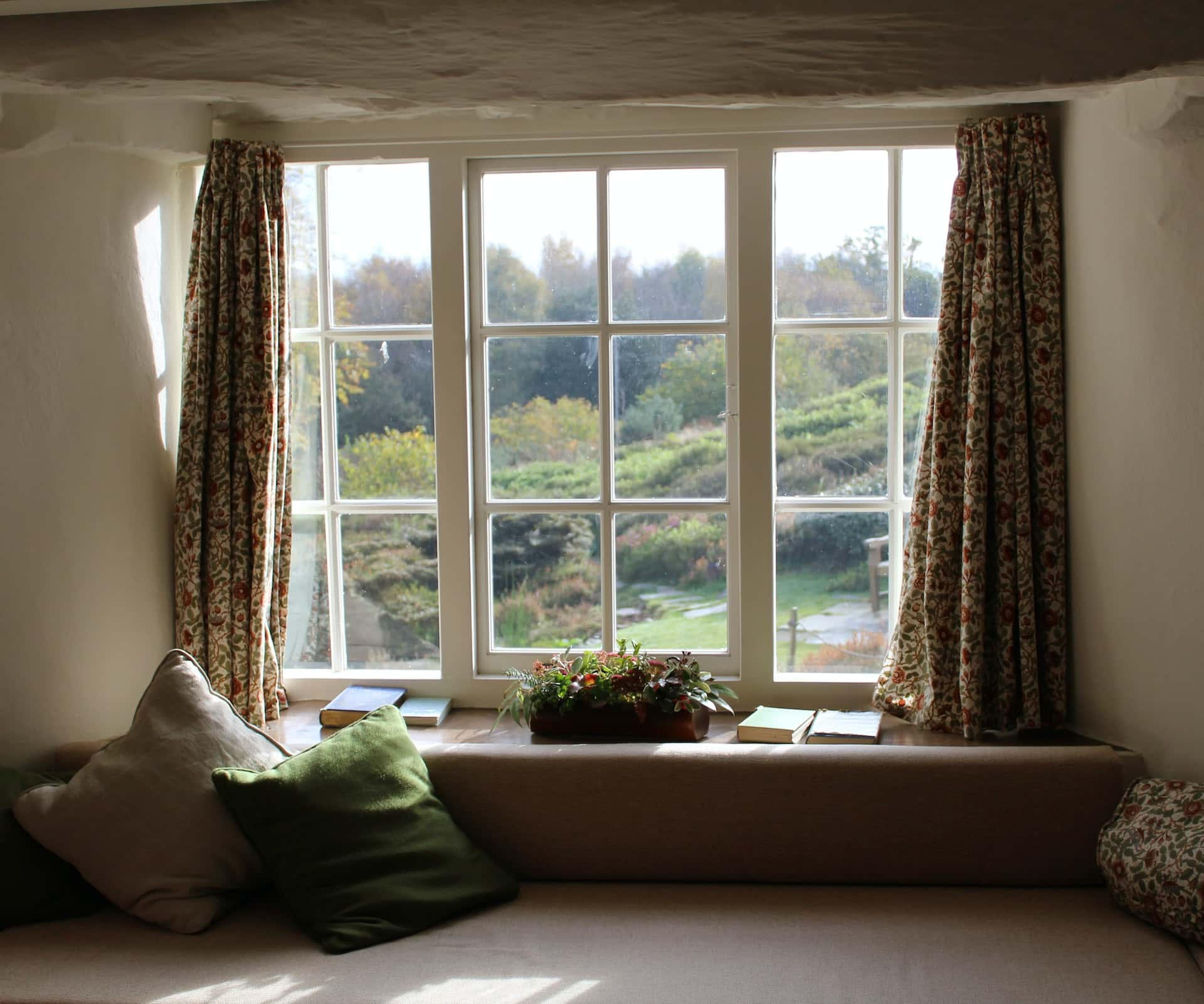uPVC stands for unplasticised polyvinyl chloride. It is widely used in construction due to its lightweight build, durability, and low maintenance. They are a cheaper and more practical alternative to timber, which is why it is finding use as window frames, sills, and doors.
At the same time, they can acquire the same warm look, feel, and texture as actual wood, which means that you are losing out nothing on the aesthetics. Functionally, uPVC window types offer thermal insulation that adds to the bouquet of advantages mentioned previously.
So, whether you are installing double-glazed window frames or upgrading your single-glazed windows, here are some different types of uPVC windows that you can consider.

Fixed uPVC Window Types
As the name indicates, fixed uPVC window types are permanently fixed into the wall. As such, you cannot open or close these windows, which is why they are also known as picture windows. They can be of any shape, size, or design of your choice. Since they are fitted into the wall, they also require negligible hardware.
Such uPVC window types are larger used for ornamental reasons and to let the sunlight stream in – minus the dust and pollution. Plus, when you use double-glazed window frames, these uPVC windows will keep the weather elements strictly outside! Fixed windows in the exterior walls of the living room must be secured with reinforced bars or grills.

Casement uPVC Window Types
Casement windows are one of the simplest uPVC open-type windows. Also known as crank windows, they have hinges that connect the side walls of the frame to the longer edge of the window.
As such, these windows can swing inwards and outwards while opening or closing. These uPVC window types also have a locking mechanism to ensure safety. There are different styles of casement uPVC windows depending on the number of hinges present. For example, the picture above depicts a single casement window, whereas the French-style window with two hinges is known as a double casement window.

uPVC Hatch Window
Also known as awning windows, hatch windows are the type that is hinged at the top and swing outwards in a bottom-up fashion. It derives its name from the awning-like feature created by the window when it is open. As a result, you can keep the window open even during rain and enjoy the cool air from outside.
Further, they stand out a little more than your average casement window simply because of their distinct style. You may have seen these uPVC window types in bathrooms, basements, and semi-modular kitchens. Some hatch windows are also installed above doors and windows for greater control.

Sliding uPVC Window Types
Sliding uPVC window types are a perfect addition to modern homes. Maybe you want a window that opens vertically or horizontally; or a window where some panels are fixed, and others move. Perhaps you are on the hunt for a size-agnostic window design, or you wish to install a window where space is a constraint.
Irrespective of your requirement, the answer is pretty straightforward – sliding windows. The compact design and the sheer versatility of sliding windows make them a popular choice amongst homeowners in uPVC windows open type.

Bay uPVC Window Types
Bay windows are uPVC window types that jut outwards like a covered balcony – or a window seat into the world, if you may. They are typically seen in living rooms and bedrooms. Apart from adding aesthetic value to the facade of your home, they also serve a functional purpose by increasing the carpet area inside.
You can convert this area into your reading nook, at-home office, or even the dining space. The bay windows could be fixed, casement-style, sliding, or a combination of these.

Louvred uPVC Window
Louvred uPVC door and window types put you in charge of visibility, privacy, and ventilation. The louvres are essentially movable shutters that you can close or open as and when needed. Think of them as blinds permanently attached to your windows.
Typically, these uPVC window types do not have a glass panel and may be covered by mesh on the outer side. As such, they will let the air in and keep your space well-ventilated. This uPVC window design is highly recommended for homes located in areas having warmer climates.

Conclusion
Now that you know the different types of uPVC windows, you can pick one that suits your home best.
For personalised advice on uPVC window types or anything home decor, you can schedule a consultation with a HomeLane expert, and we will lead the way!

FAQs
What are the different types of uPVC windows that I can choose from?
The different uPVC window types are as follows:
- Casement
- Fixed
- Tilt and Turn
- Bay
- Sliding
- Awning
- French
- Sliding Sash
- Louvred
- Combination
How long do uPVC windows last?
uPVC windows can last you 10-35 years, depending on the placement, quality, and upkeep.




